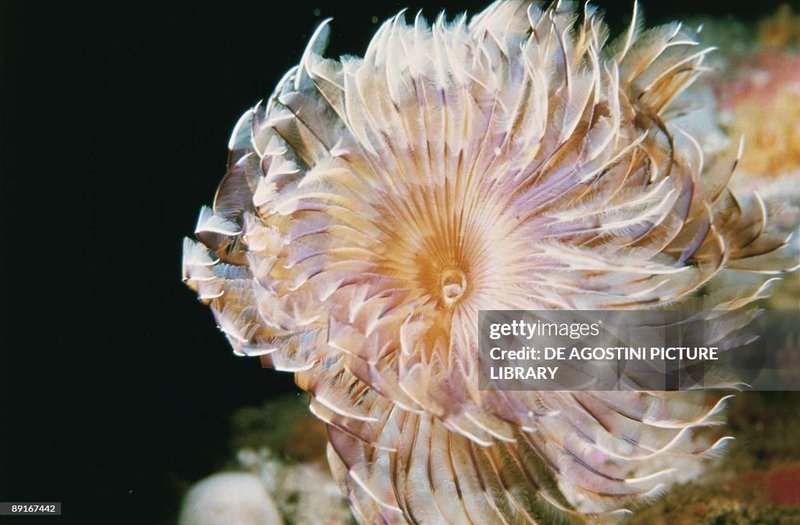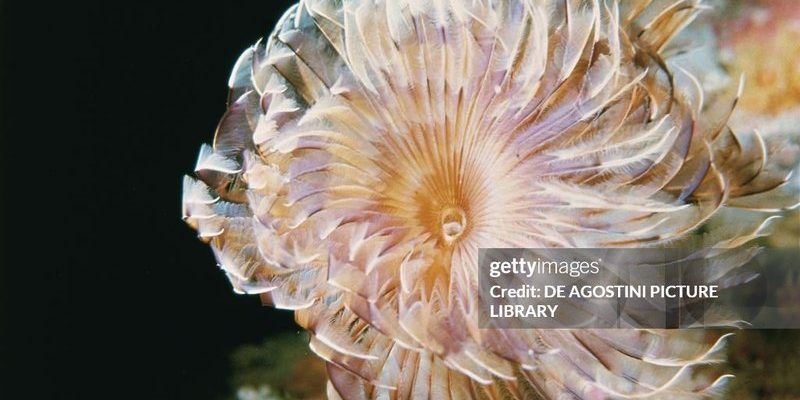
Sabellid fan worms, often recognized by their feather-like crowns, have an intriguing relationship with other marine life. When you think about it, this interaction is much like us humans working together in communities. Each organism, large or small, contributes to the overall wellbeing of the ecosystem. So, let’s dive deeper into how these charming little worms interact with their surroundings and why that matters.
What Exactly Are Sabellid Fan Worms?
The Sabellid fan worm belongs to a group of marine polychaetes. Picture a segmented body with a mesmerizing crown of tentacles resembling a fan. These worms come in various species, each with its own unique twist on this fan-like appearance. Found in both shallow and deep waters, they often attach themselves to rocks or other structures, creating intricate habitats.
Their beautiful crowns, made of tiny tube-shaped structures, do more than just look pretty. They’re essential for feeding. Each feather captures plankton and organic particles from the water, which the worm then consumes. This feeding mechanism allows the Sabellid fan worm to thrive while simultaneously filtering the water, contributing to the overall health of its environment.
Understanding Microfauna: The Small Players in the Ecosystem
Microfauna refers to the tiny creatures that inhabit soil, water, and even inside other organisms. In the ocean, this includes various microscopic organisms like zooplankton, bacteria, and tiny crustaceans. While they are often overlooked, these minuscule life forms play crucial roles in nutrient cycling, food webs, and overall ecosystem function.
Imagine a bustling café where everyone plays a part: the barista brews the coffee, the chef prepares the meals, and the customers enjoy their time. In marine ecosystems, microfauna serve as the baristas and chefs. They break down organic material, making nutrients available for larger creatures, and in turn, they become food for species higher up the food chain.
The Feeding Habits of Sabellid Fan Worms
Sabellid fan worms are filter feeders, which means they get their nourishment by filtering out tiny particles from the water. They extend their feathery crowns into the current to catch passing plankton and organic matter. Here’s the interesting part—while they are busy gathering food, they also create a steady flow of water, which benefits their microfaunal neighbors.
Here’s the thing: these feeding habits can attract other microfauna. As the Sabellid fan worm filters water, it stirs up sediment and releases nutrients. This increase in food availability can draw in small organisms, creating a mini ecosystem right around the worm. It’s a win-win situation; the worm gets food, and surrounding microfauna thrive.
Sabellid Fan Worms and Symbiotic Relationships
Symbiosis is a term used when two different species live closely together and interact in a way that benefits both parties. Sabellid fan worms engage in symbiotic relationships with various microfauna, like certain types of algae and bacteria. You might be wondering how this works. Well, let’s break it down.
For example, some microalgae live on the surface of the fan worm. They perform photosynthesis, converting sunlight into energy. In return, the algae get a safe place to live and access to the nutrients filtered out by the worm. This relationship showcases how interconnected marine life can be, emphasizing the importance of each organism’s role.
The Role of Sabellid Fan Worms in Nutrient Cycling
Nutrient cycling is critical for maintaining healthy ecosystems. Sabellid fan worms contribute to this process by breaking down organic matter and making nutrients available to other organisms. When they feed, they help recycle material that would otherwise be lost to the environment.
As these worms consume plankton and organic particles, they excrete waste that is rich in nutrients. This waste becomes food for bacteria and other small organisms, which then support larger species. Picture it like a circle: nutrients flow from the Sabellid fan worm to the microfauna, and back again, creating a sustainable system.
Interactions with Other Marine Creatures
Aside from their interactions with microfauna, Sabellid fan worms also play a role in their relationships with other marine species. For example, they provide shelter for small fish and invertebrates. These creatures use the worm’s tubes as a refuge from predators, showcasing another layer of interaction.
Additionally, many fish species are known to graze on Sabellid fan worms. This predation might seem harmful at first glance, but it’s part of a natural balance. Healthy populations of worms can support fish life, and in turn, these fish help control the worm populations. It’s nature’s way of keeping everything in check.
How Environmental Changes Affect Sabellid Fan Worms
Like all creatures, Sabellid fan worms are sensitive to their environment. Changes in water temperature, pollution, and habitat destruction can heavily impact their survival. For instance, rising temperatures can affect the availability of plankton, the main food source for these worms. Less food means fewer worms, which can disrupt the entire ecosystem.
Pollution, particularly from land runoff, can also introduce toxins that lead to a decline in worm populations. Since they play a critical role in nutrient cycling and providing shelter for other species, their decline can trigger a chain reaction throughout the ecosystem. The health of Sabellid fan worms is often an indicator of the overall health of their marine environment.
In summary, Sabellid fan worms are much more than just pretty decorations on the ocean floor. They’re essential players in a vibrant ecosystem, interacting with microfauna and other marine life in various ways. From their feeding habits that help recycle nutrients to the shelter they provide for small fish, these worms play a vital role in the health of their underwater communities.
So, next time you hear about marine ecosystems, remember the small guys like the Sabellid fan worm. Their interactions with other microfauna keep the balance in their world, ensuring the ocean remains a thriving place for all. It’s a fantastic example of how interconnected life can be, and why protecting these habitats is crucial for the future of our oceans.

